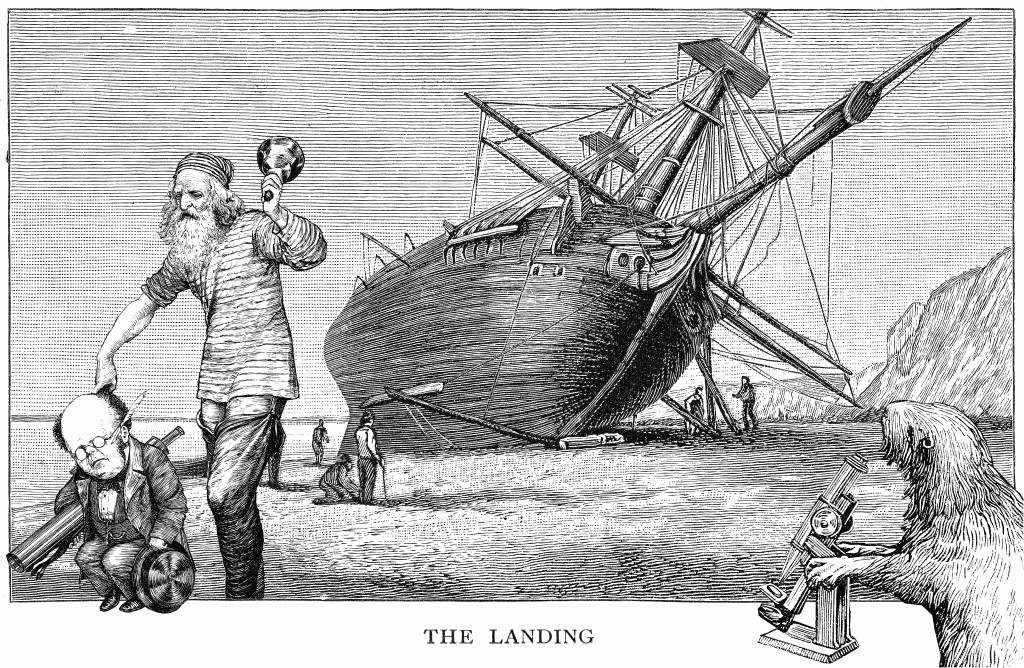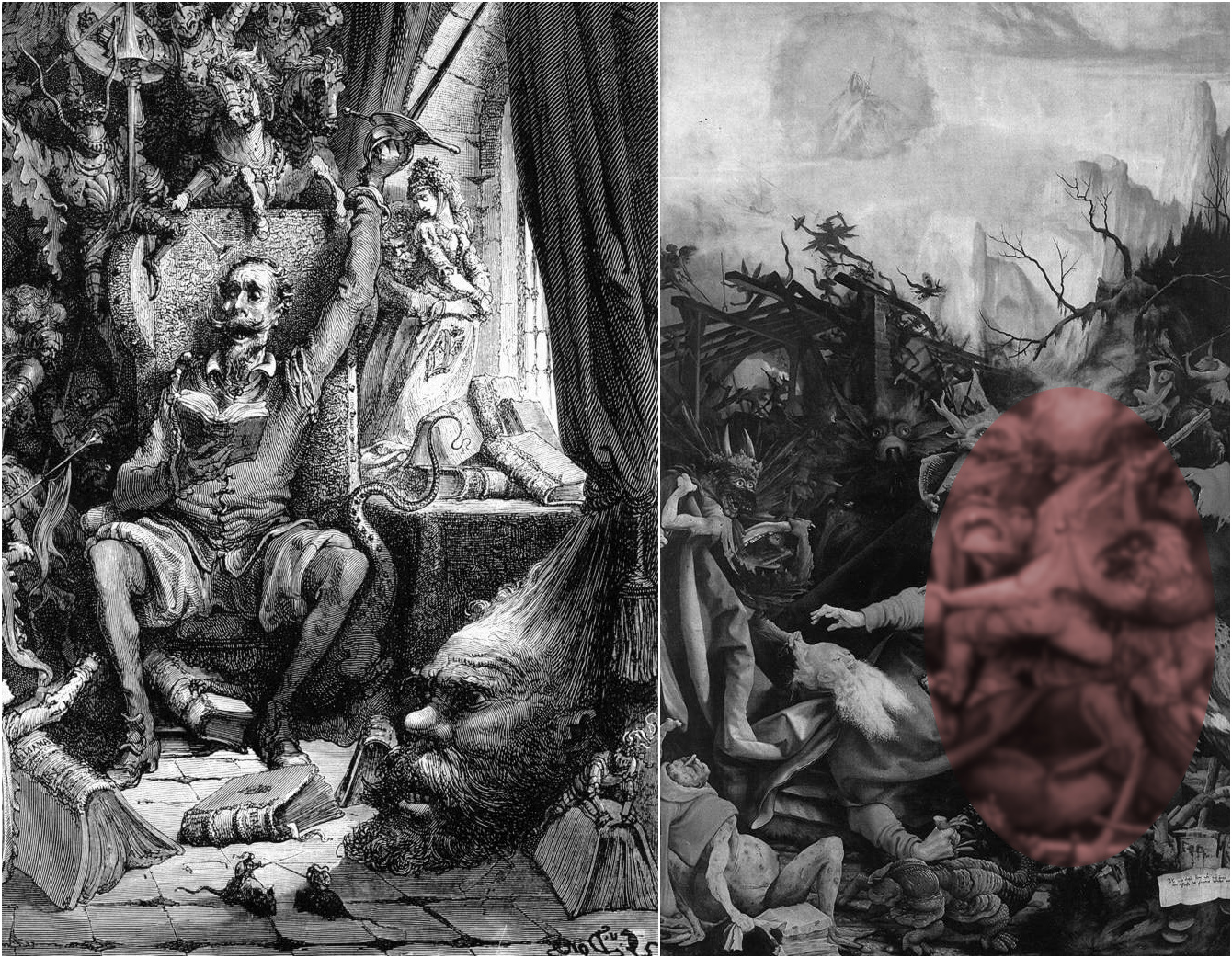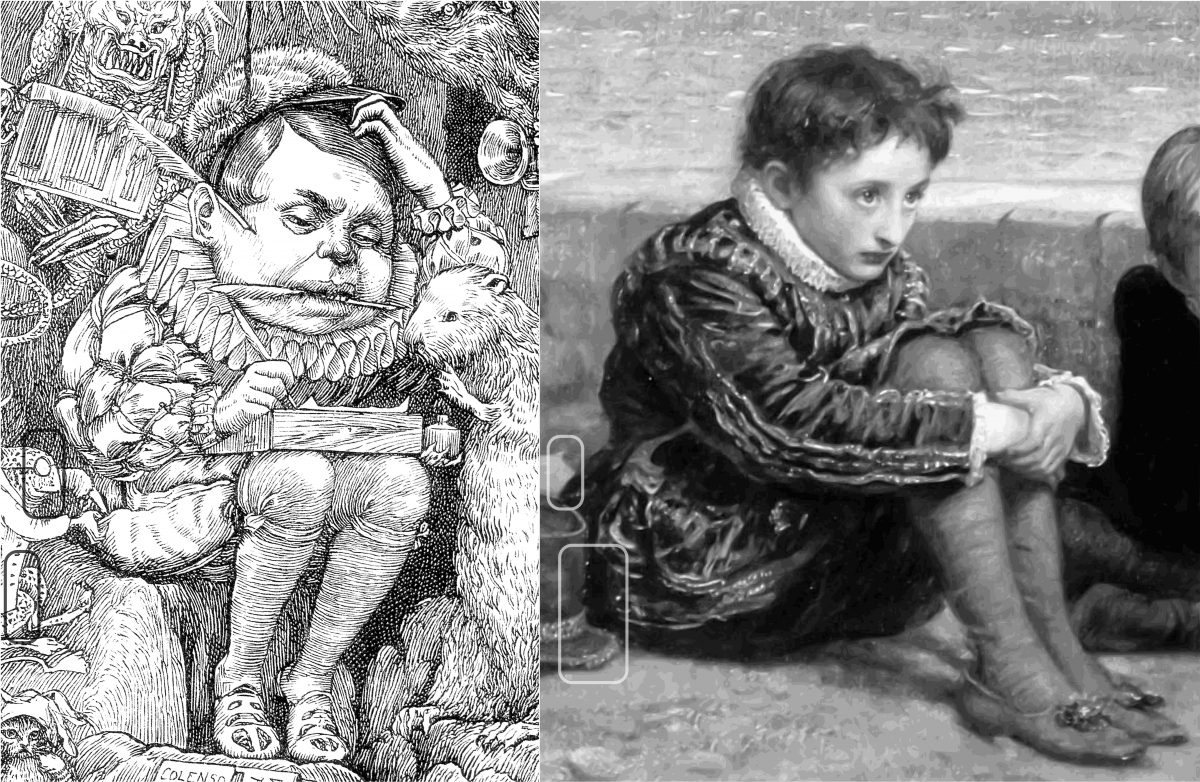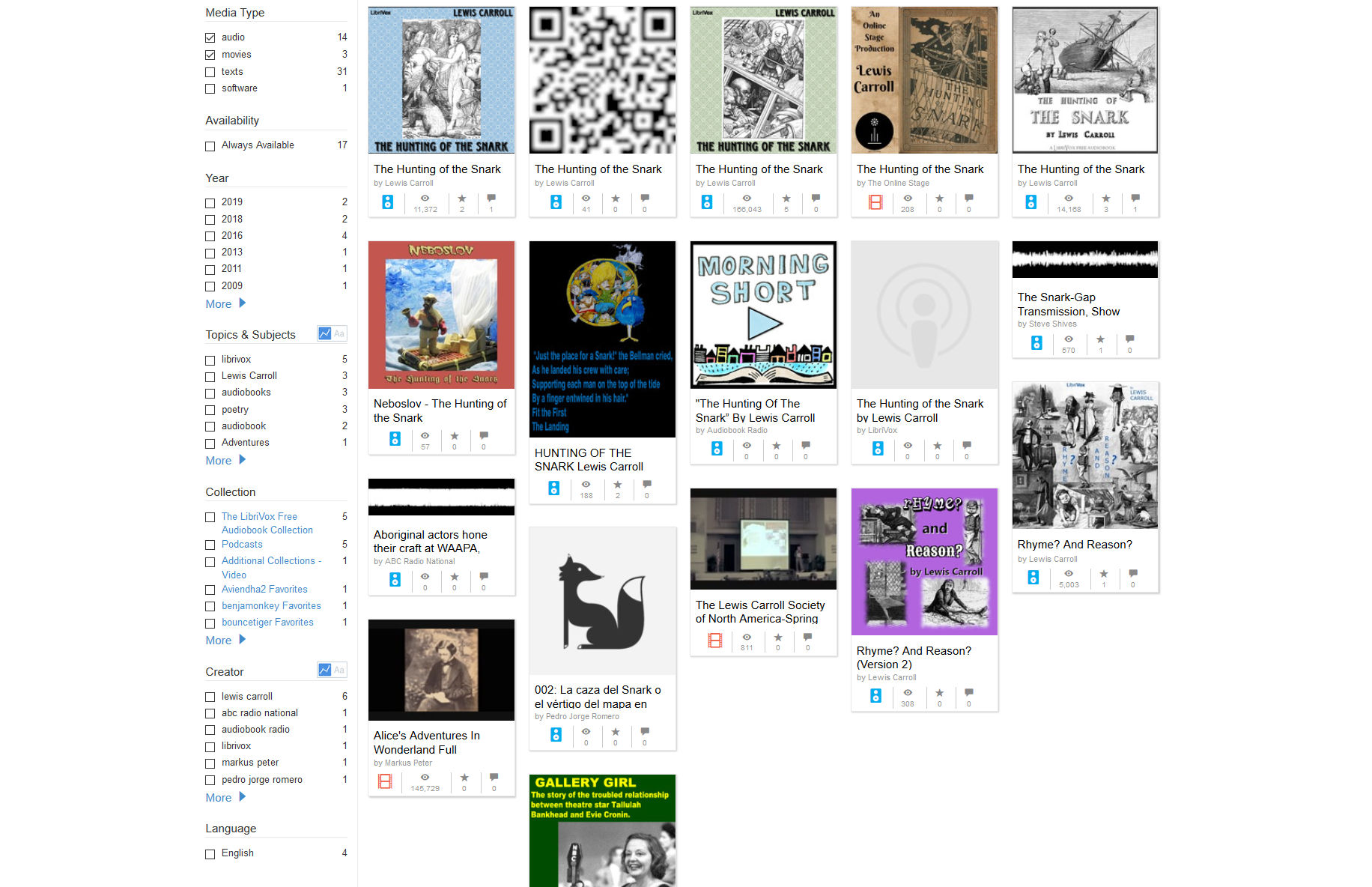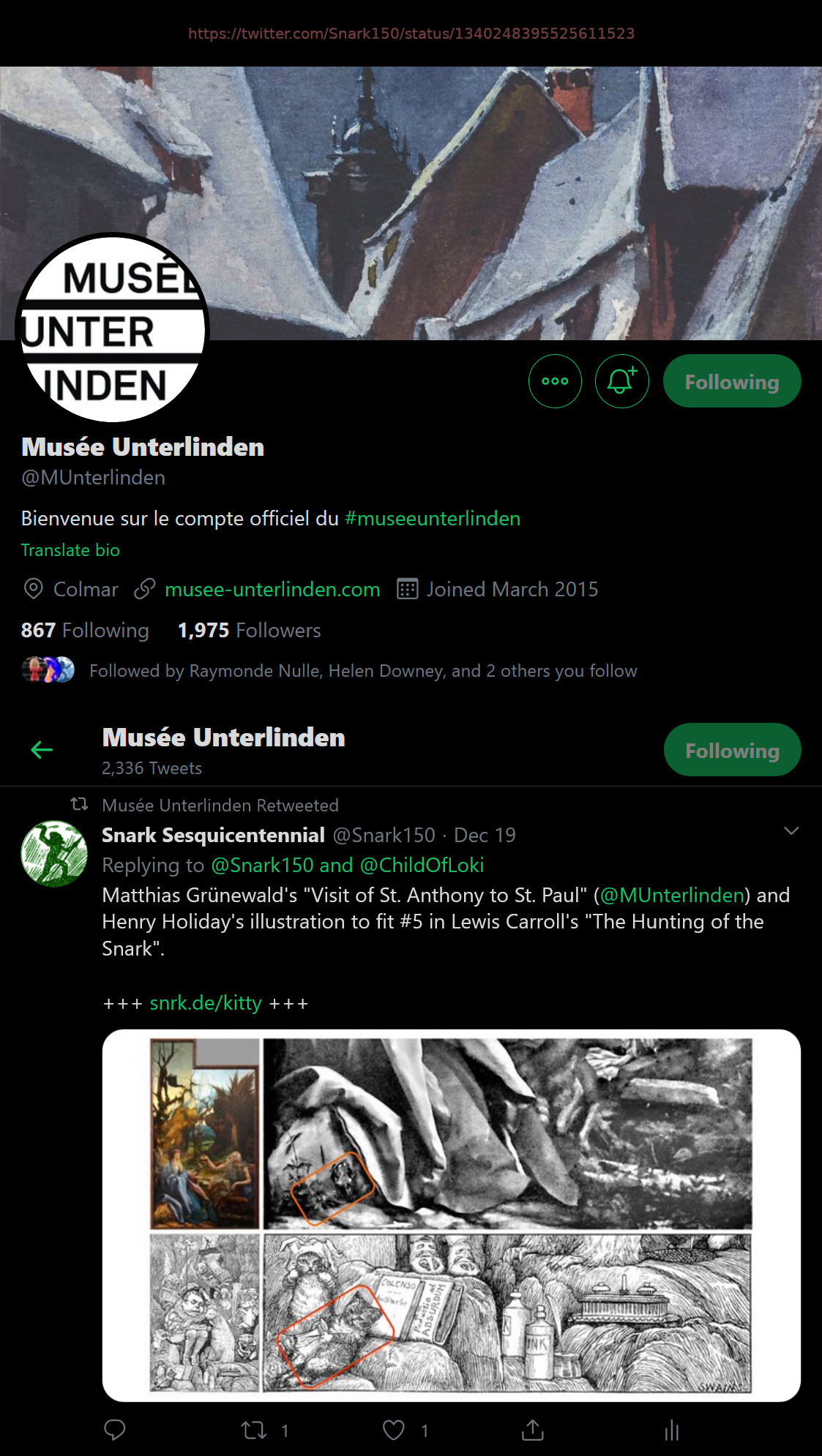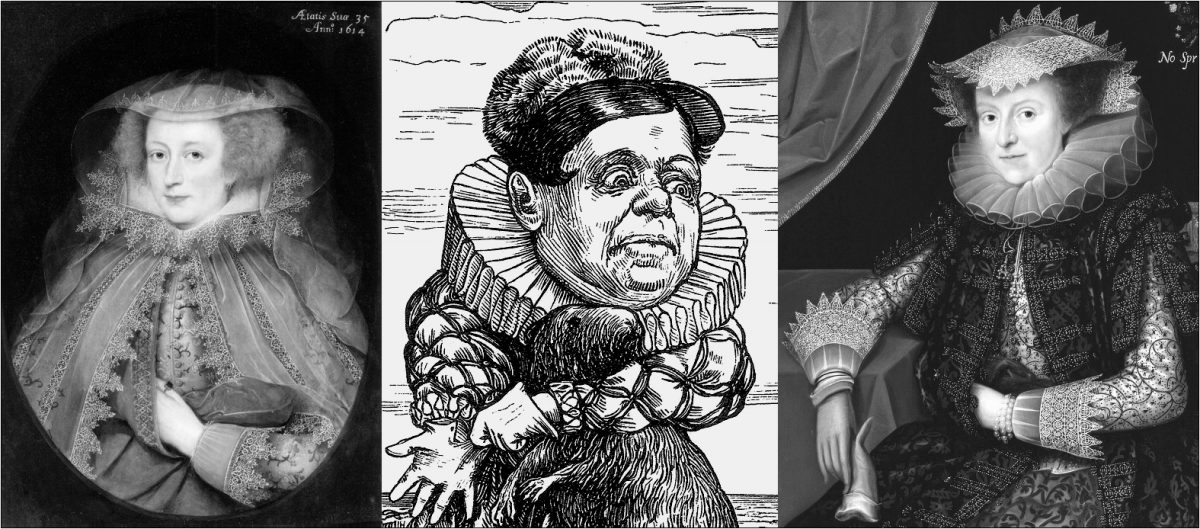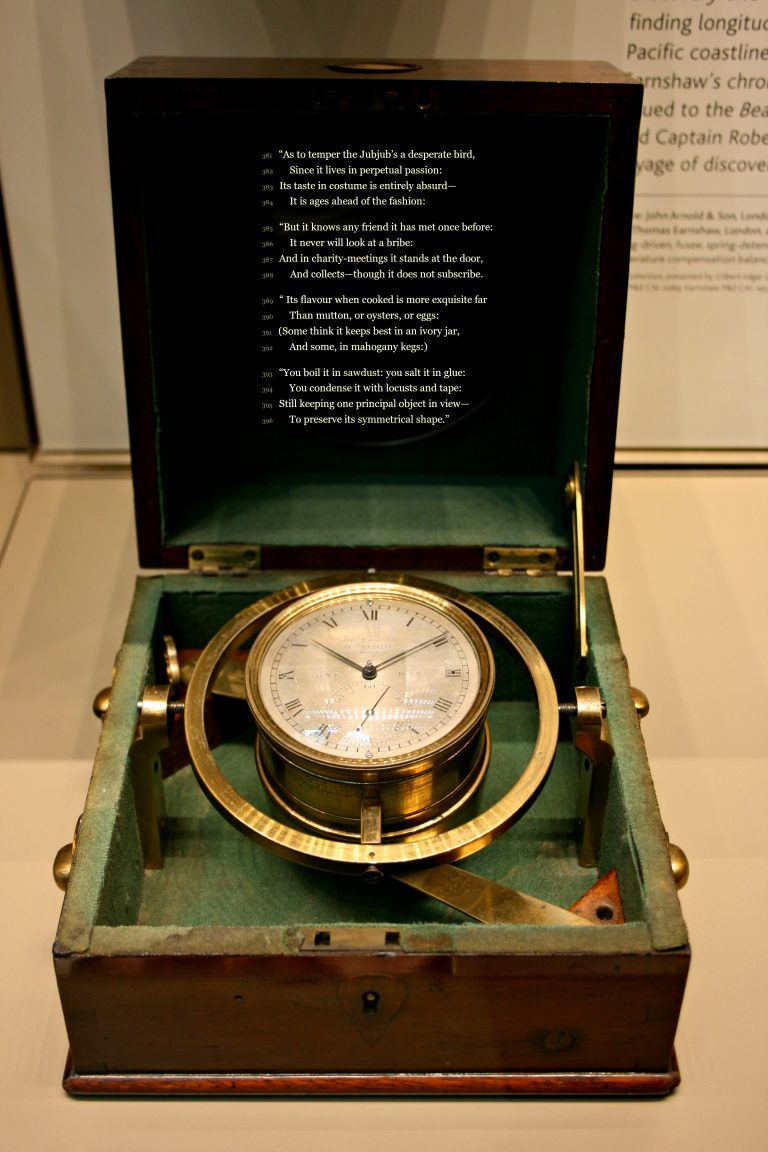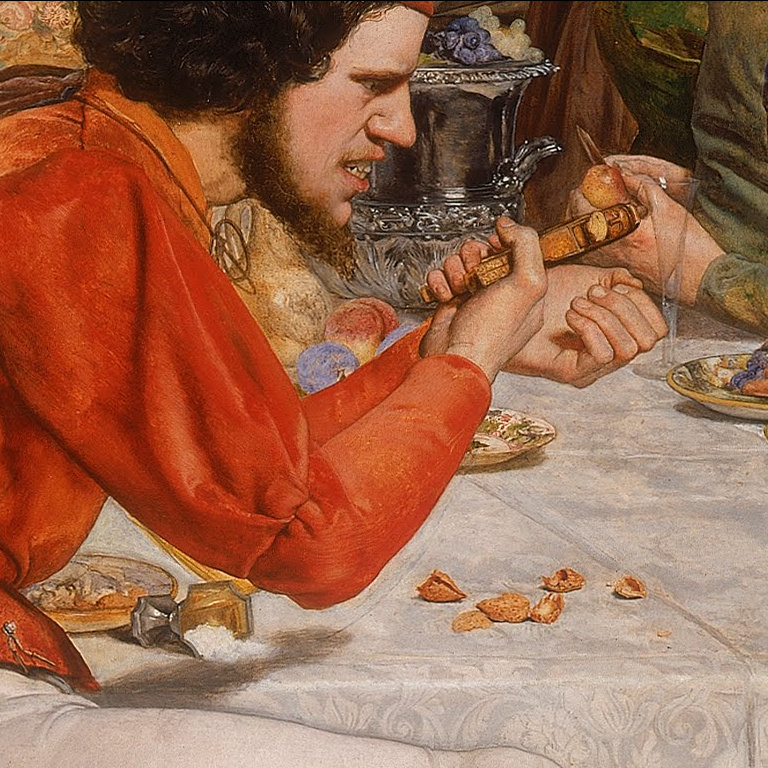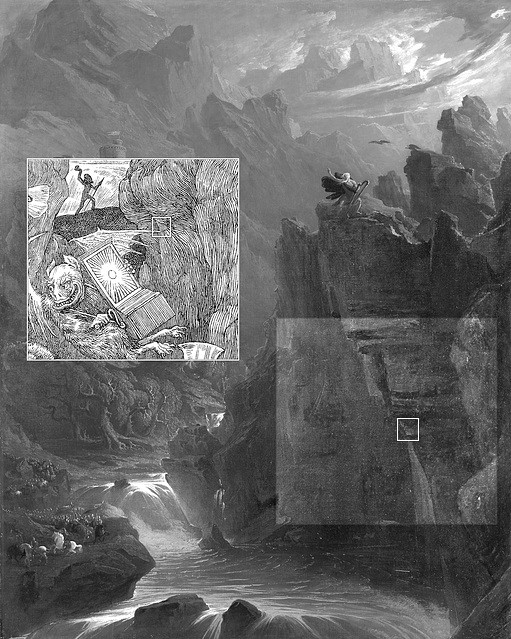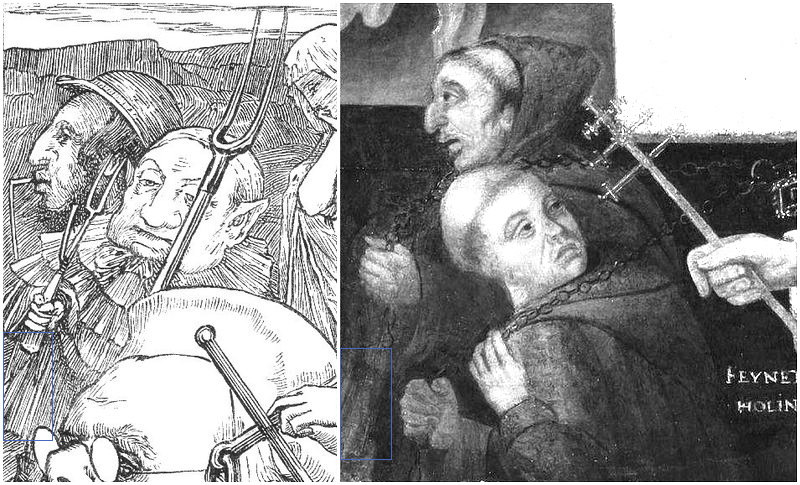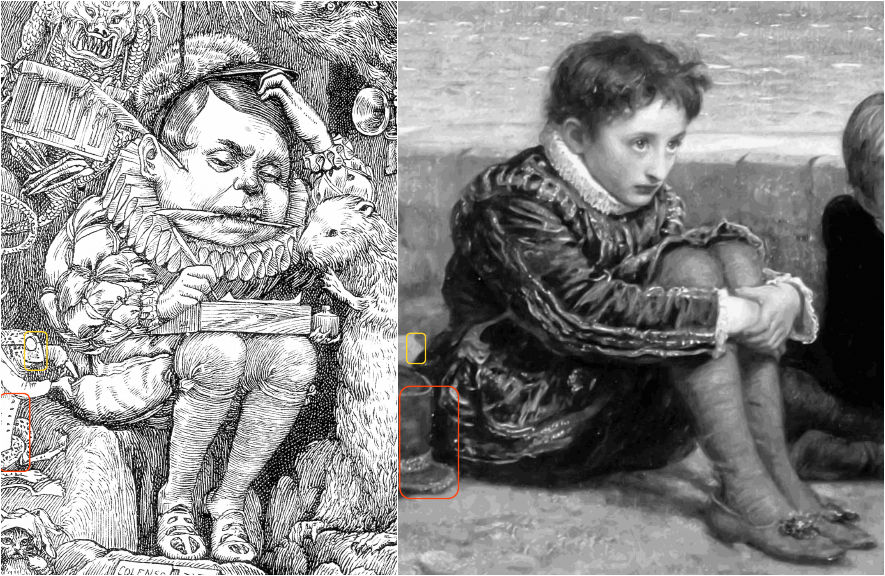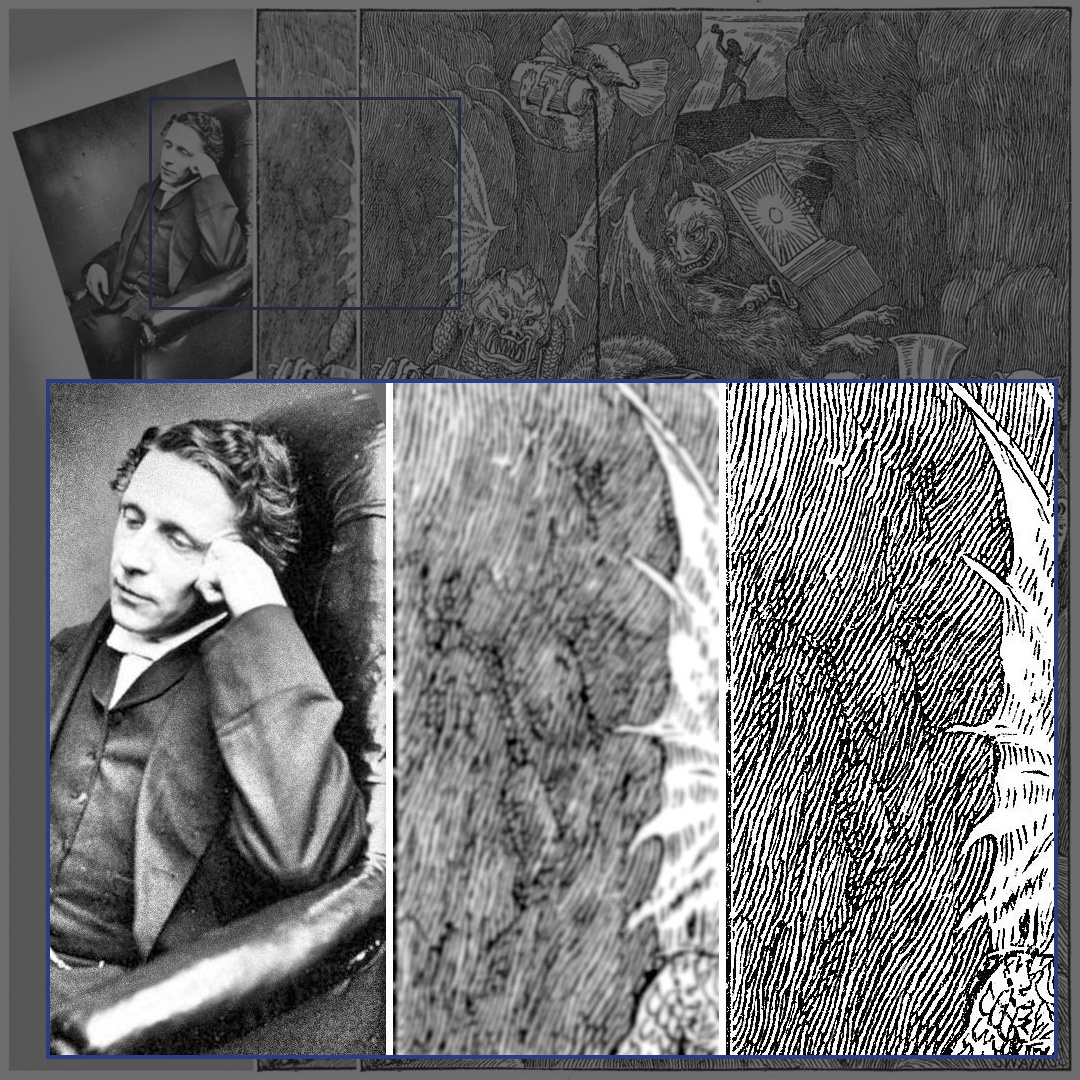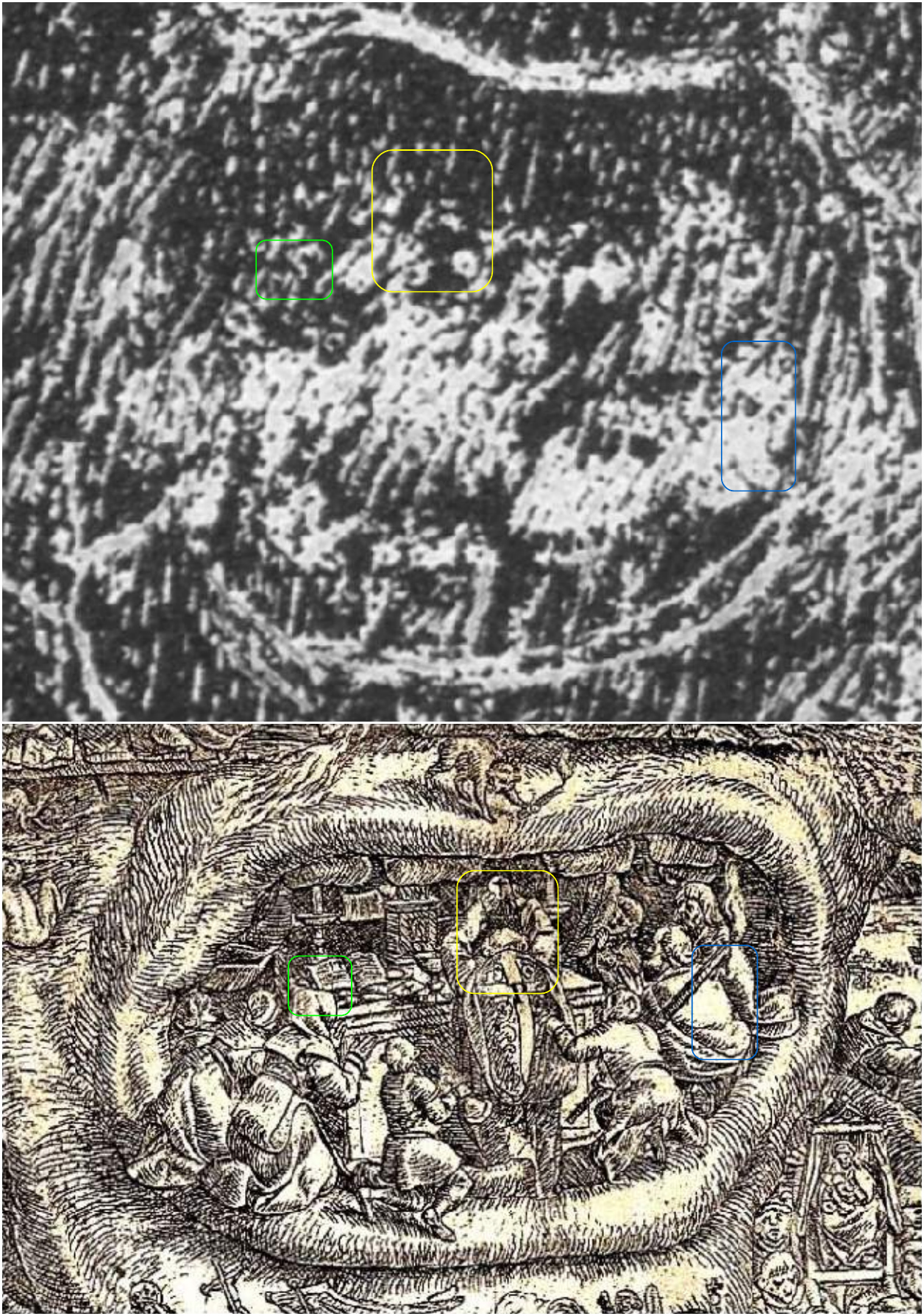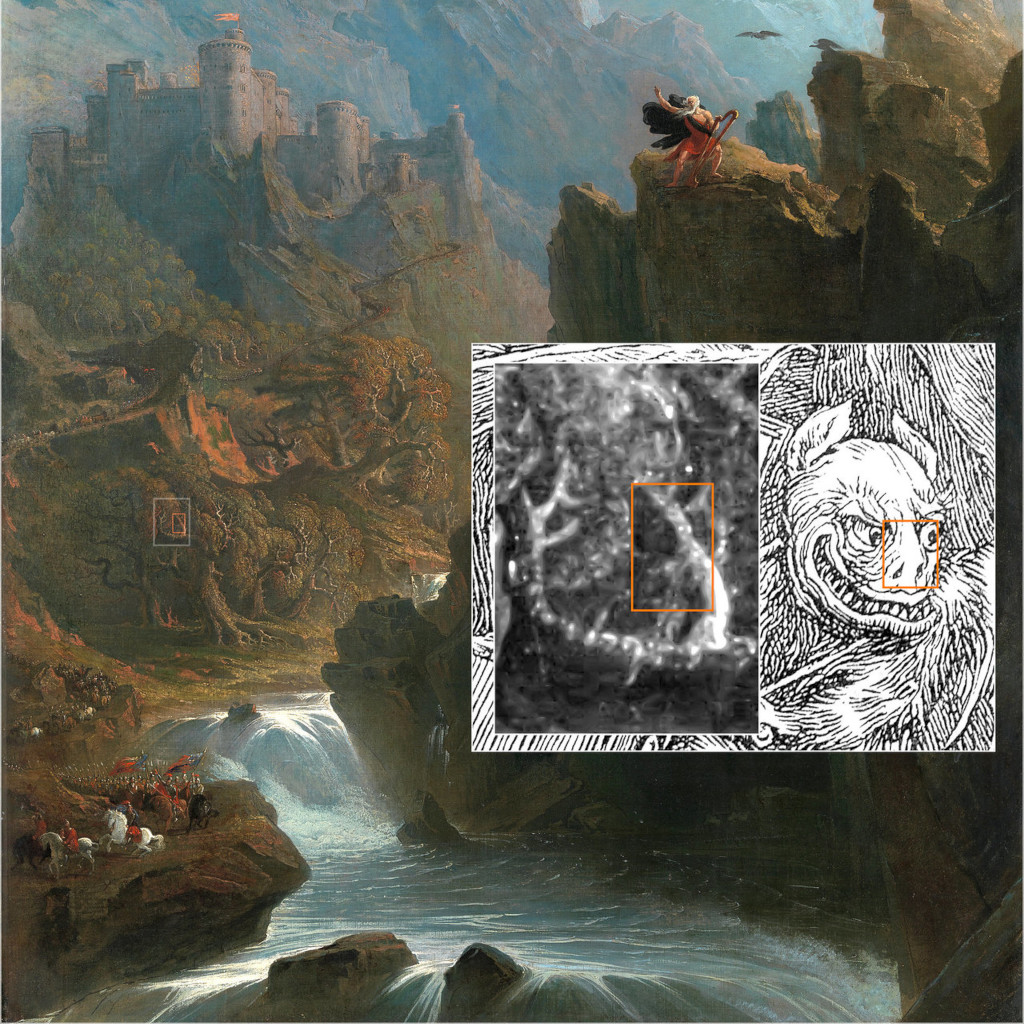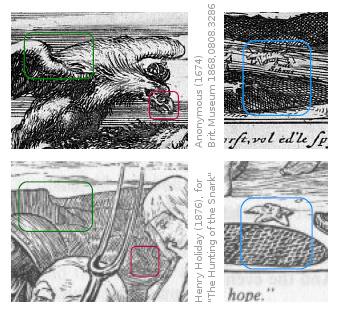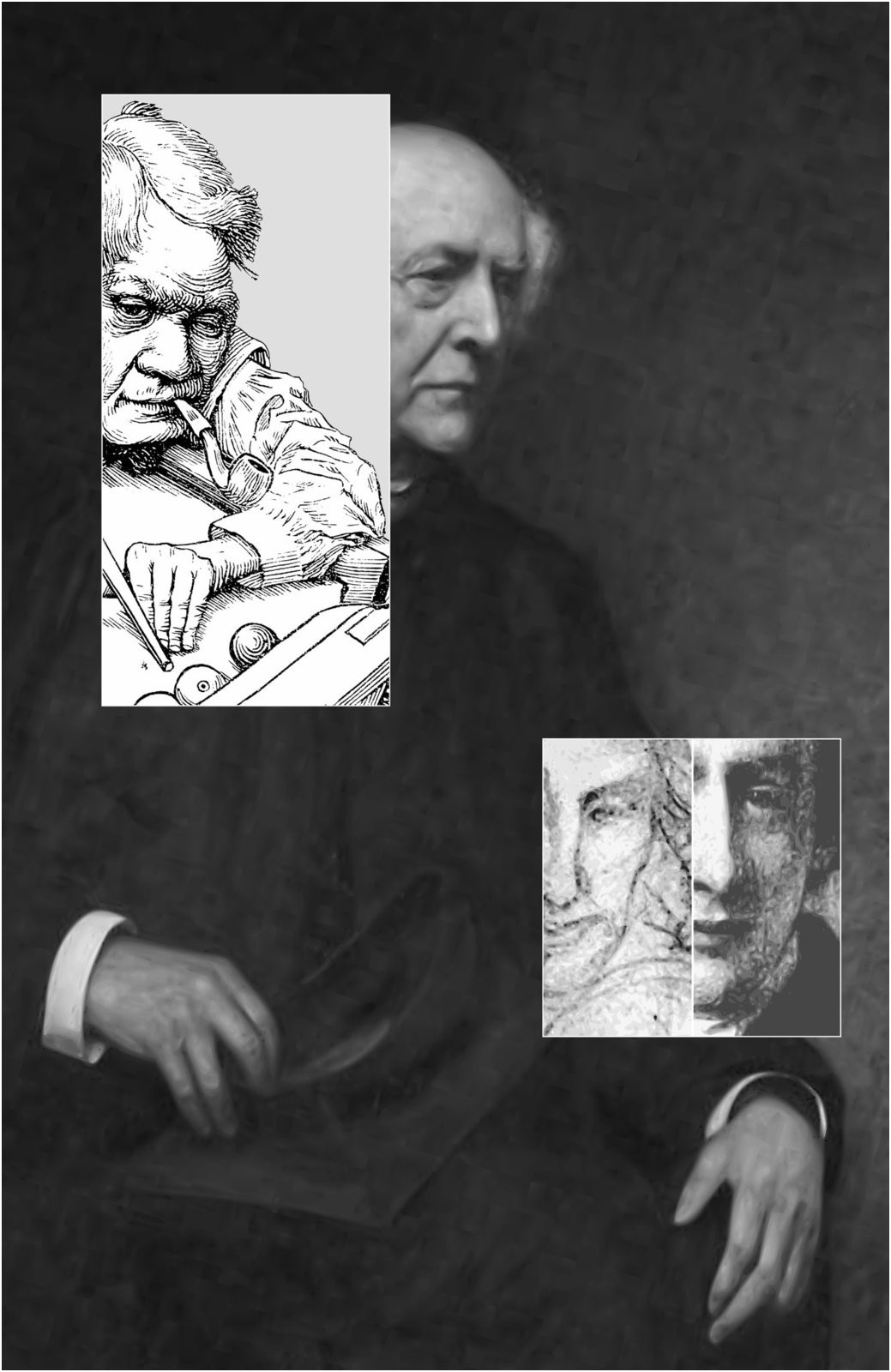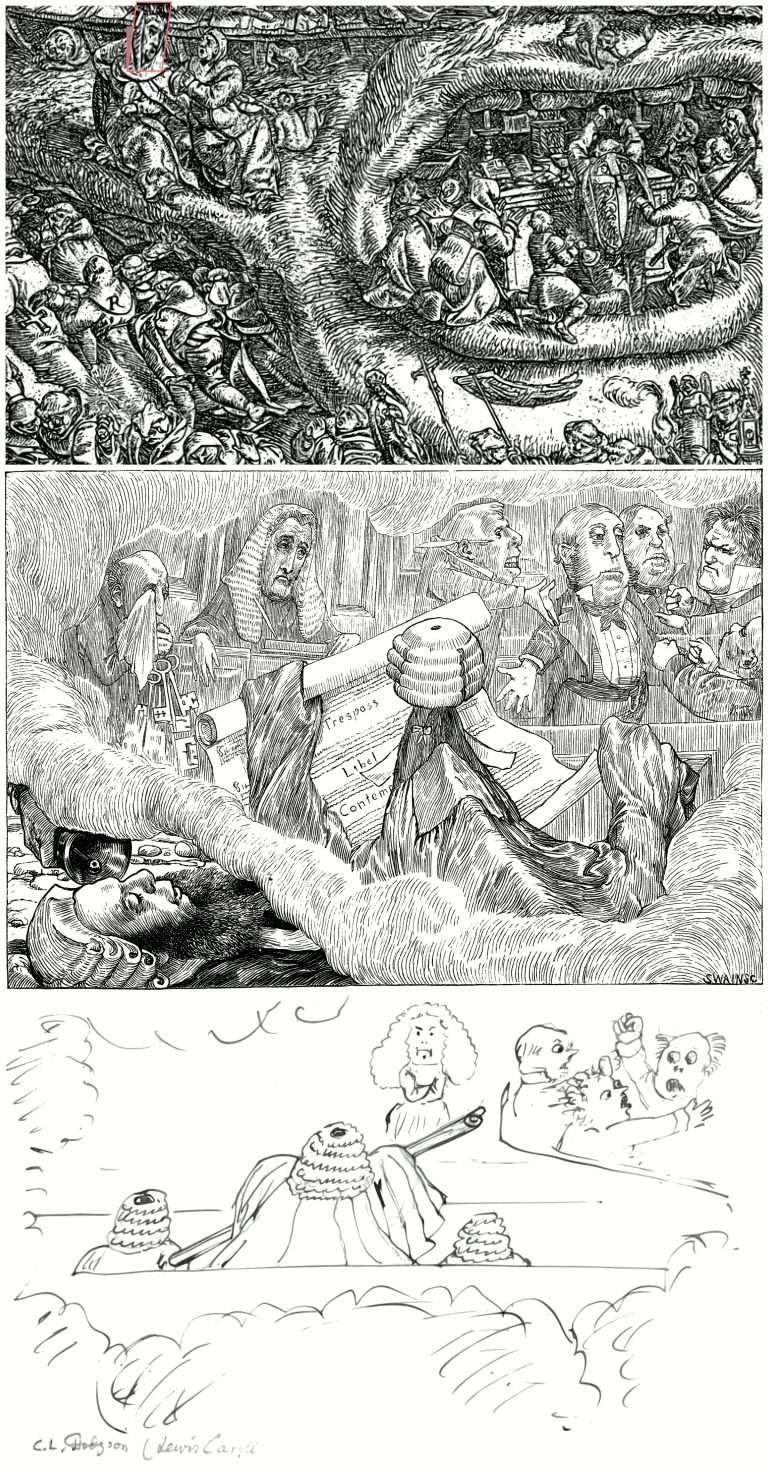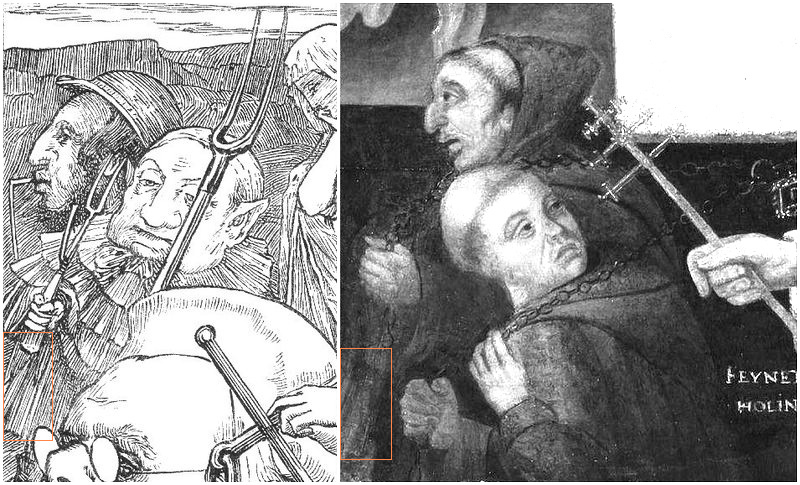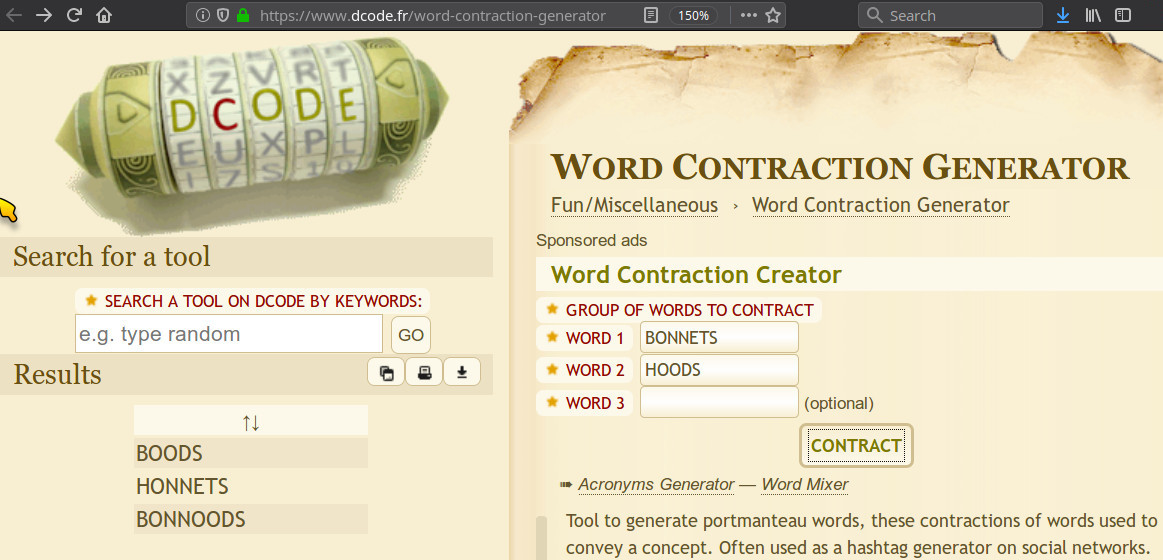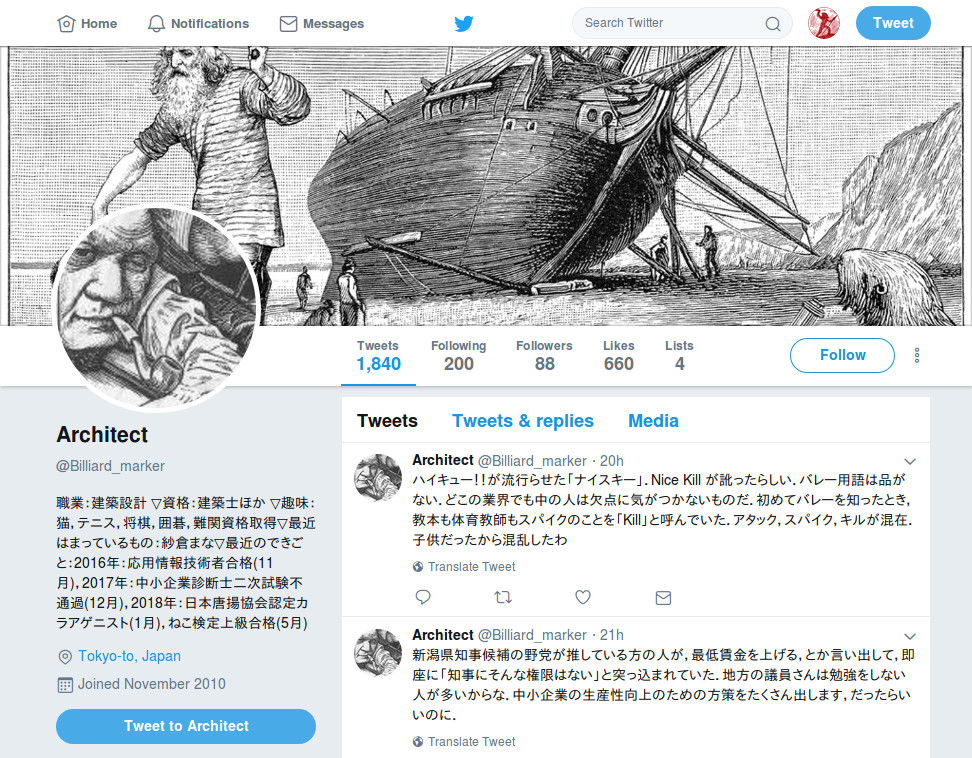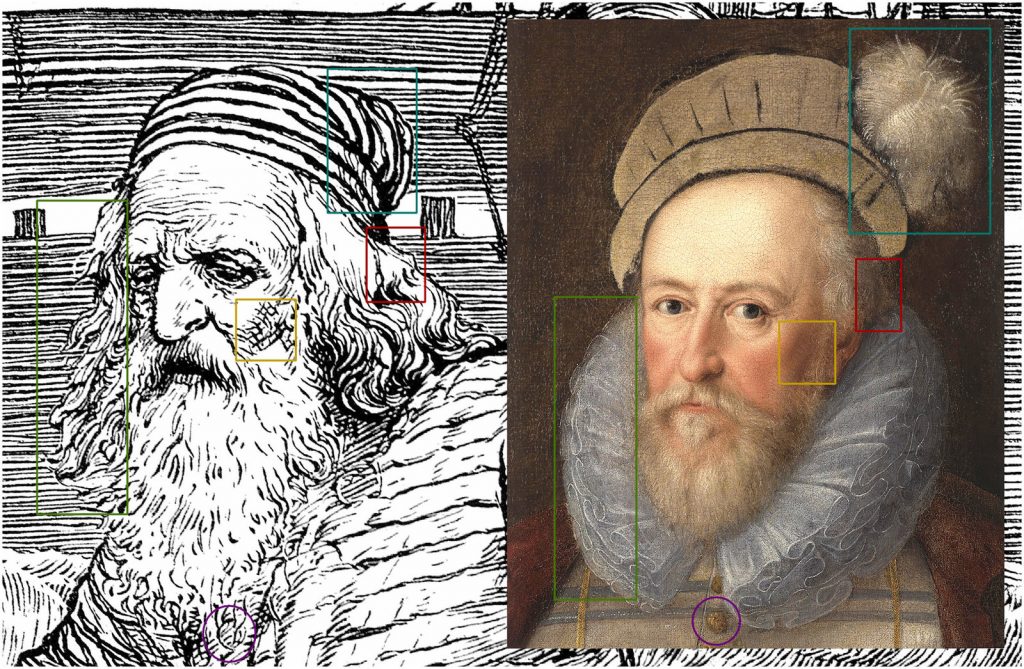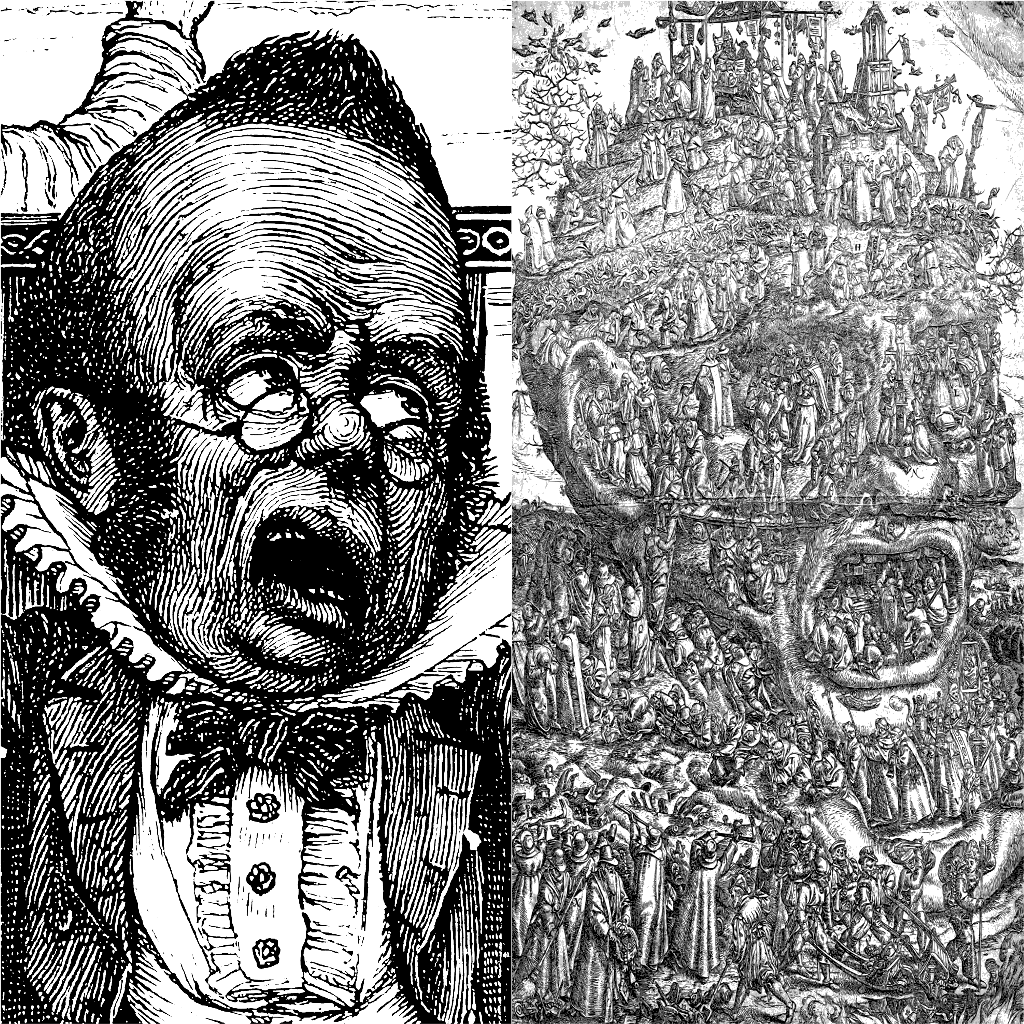https://bookbarnbbi.wordpress.com/2017/12/01/pick-of-the-darwin-room/:
[…] When [The Hunting of the Snark] was published in 1876 it was illustrated by Henry Holiday who, though a very talented artist, failed to capture the surreal nature of Carroll’s poem. The illustrations for this edition however, provided by Gormenghast author Mervyn Peake, are the perfect accompaniment. Peake’s drawings have an uneasy bubbling quality, blending with the silly and macabre feel of the words […]
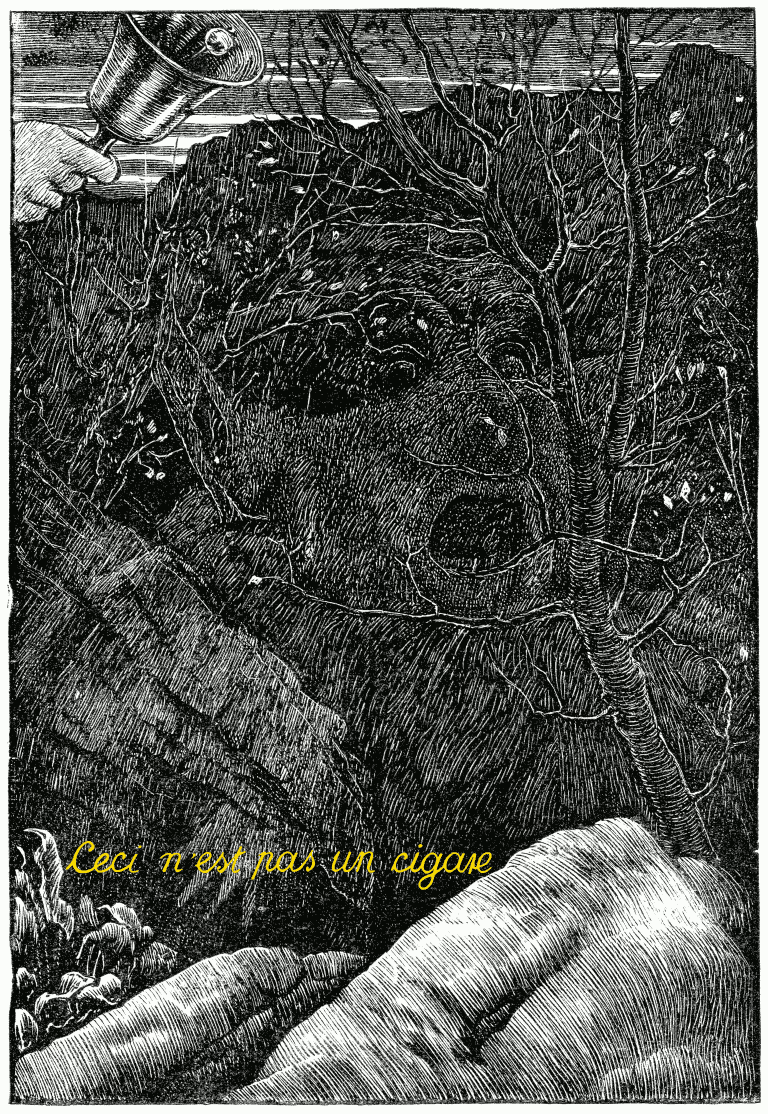
Nothing against Mervyn Peake’s illustrations, but already this illustration (even without the yellow lines and dots which I added) might contain more elements of “surreal nature” than what you find in Mervyn Peake’s illustrations. I like those playful weeds (or animals?) in the lower left corner of Holiday’s illustration.
That’s not the only thing which that corner has to offer.
Another popular path (not) to understand The Hunting of the Snark has been stated more than three times: Some call Carroll’s poem “nonsense”. It isn’t.
Anyway, I don’t think that Holiday failed to convey to us graphically what Carroll meant. The price for his achievement perhaps was that Holiday’s illustrations are less eye pleasing than illustrations like Peake’s.
Holiday’s illustrations are as grotesque as Carroll’s poem.
2018-02-16, updated: 2020-02-01
